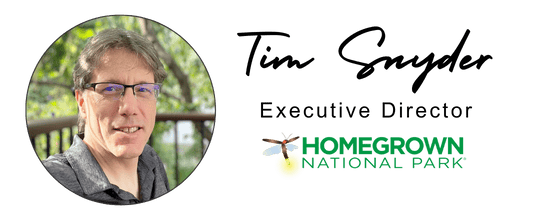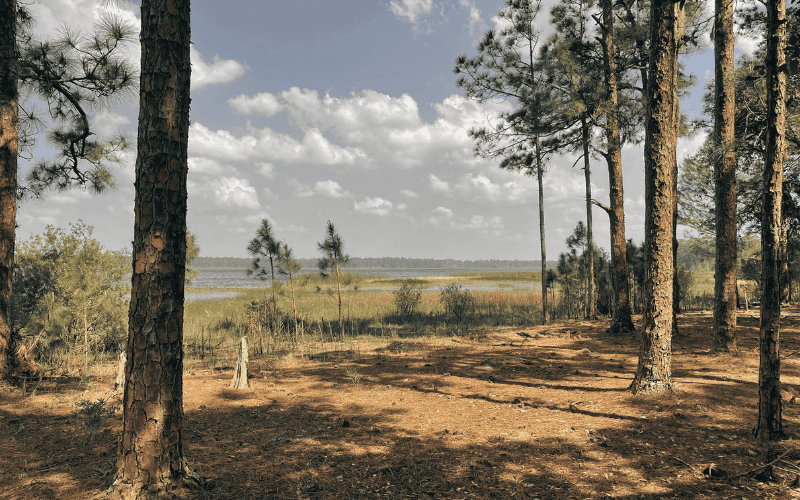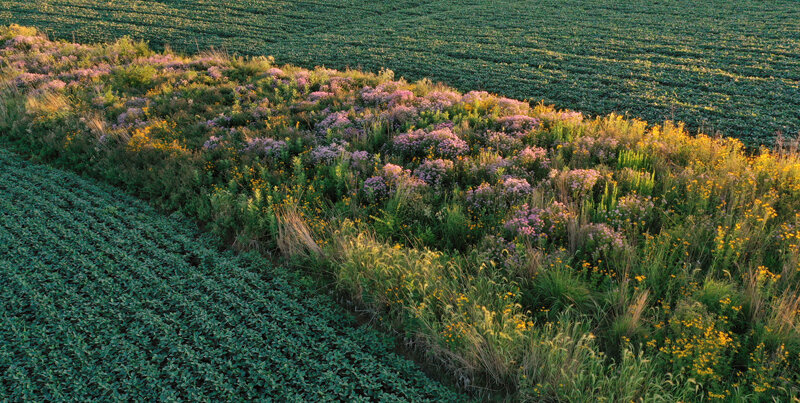By Tim Snyder, Executive Director
Est. Read Time: 5 minutes
Earlier this spring, I found myself standing beneath a grove of live oaks in central Florida—massive, gnarled trees draped with Spanish moss and surrounded by the quiet hum of life. It was one of those moments that makes you slow down, tilt your head back, and just feel the age of a place. These oaks were likely over 300 years old. Imagine that. They were here before Florida was a state, before the American Revolution, witnesses to centuries of change, and yet still holding ground.
And beneath them? Life teeming. Warblers darting, leaf litter crawling, understory alive. No mulch moonscapes. No invasive carpets. Just an intact, native ecosystem doing what it’s always done: support life.
…..Add something about the reality that there were invasive grasses popping up reminding me of the work still to do…..
That scene stuck with me. Not just because of the beauty of it, but because it crystallized why we do what we do at Homegrown National Park®. We’re not just planting milkweed or removing barberry. We’re trying to regenerate function, to build, over time, the kind of living systems that support everything else. The kind of systems those oaks still anchor today.
It’s that same power we’re trying to tap into with Homegrown National Park. We’re not just planting plants—we’re planting systems. We’re not just growing gardens, we’re growing a movement. And this spring, we’ve taken real steps to deepen that work.
Strengthening Our Partnerships
Our movement is built on collaboration. We know we can’t restore biodiversity alone, and thankfully, we’re not alone.
This season, we’ve focused on strengthening our relationships with organizations that share our vision and values. Groups like Wild Ones, Less Lawn More Life, and the Native Plant Society of Texas are not just allies in name—they’re on the ground, in communities, creating change. From shared campaigns to aligned messaging, we’re working together to empower more people to take action in their own homes, parks, and neighborhoods.
These partnerships help extend our reach, ground our work in local ecosystems, and ensure we’re moving with both urgency and impact. You’ll be hearing more from and about these collaborators as we continue to amplify each other’s efforts.
Growing Our Volunteer Community
One of the most energizing shifts this spring has been the renewed interest in getting involved. People want to move beyond awareness and into action, and we’re doing more to help make that possible.
We’re creating new roles and clearer pathways for volunteers to contribute meaningfully to our mission. Whether it’s helping maintain the HNP Biodiversity map®, supporting community outreach, or lending skills in tech, design, or education. There’s room for more people to join this work in ways that fit their lives and talents.
And I’m thrilled to officially welcome three new volunteers who are already making a big difference: Richard Bennett, Kayla Armstrong, and Mike Hanlon. All three are jumping in to help improve the usability and performance of our map, making it easier for people to register their actions and visualize our collective impact. We’re lucky to have them on board, and grateful for their commitment.
New Volunteers!

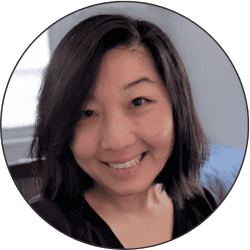
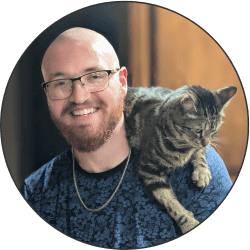
Learning Together
We believe that action follows understanding. That’s why education has always been central to our strategy. This spring, we’ve doubled down on creating more opportunities to learn, connect, and grow together.
In February, we hosted a panel discussion featuring three voices who are reshaping the way we think about landscaping, biodiversity, and beauty: Doug Tallamy, Rebecca McMackin, and Benjamin Vogt, with Margaret Roach moderating. The conversation was honest, insightful, and (judging by the feedback) deeply motivating for those in attendance.
Next up: we’re thrilled to host Basil Camu on April 17. Basil is a thoughtful arborist, systems thinker, and author of From Wasteland to Wonder (make sure you download your free eBook!). He brings a unique and holistic lens to this work, connecting ecological restoration with emotional resilience and community transformation. We’re expecting a powerful discussion, and we hope you’ll join us.
More webinars are in the works for summer and fall, so keep an eye on your inbox. These sessions are free, open to all, and meant to meet people wherever they are on their journey—from native plant novice to seasoned rewilding evangelist.
Piloting Projects with Big Potential
This spring, we also launched a pilot project that brings together three incredible initiatives: Thriving Gardens, Symbiotic Schoolyard, and Ecoplantia. The goal? Bring nature back into the classroom—not just as curriculum, but as thriving spaces that bring learning to life.
Together, we’re piloting a model that combines native planting kits, educational materials, and hands-on support for teachers. These aren’t just “school gardens,” they’re micro-ecosystems designed to help students understand their role in the web of life.
It’s one thing to teach a child that bees are important. It’s another to let them watch a bee land on a native flower they helped plant. That’s the kind of moment that shapes understanding and creates the next generation of stewards.
We’re starting small, testing what works, and learning as we go. But the potential is huge. If we can get this right, it could be a blueprint for transforming how schools think about space, science, and stewardship.
A Season of Growth—and a Challenge
Spring always feels like a beginning, but this one feels especially charged with possibility. We’re seeing momentum build, partnerships deepen, and more people than ever asking, what can I do?
So here’s my challenge to you:
As the days get longer and the soil warms, what step can you take to keep the momentum going?
Plant something native. Remove something invasive. Create a soft landing under dreams by letting your leaves lie. Turn off your outdoor lights at night and give the moths—and the fireflies—a break.
And most of all: step outside, find any grove of trees—whether it’s a city park, a patch of woods, or a single red oak in your neighbor’s yard—and remember why we’re doing this.
Because biodiversity depends on all of us.
Let’s grow something lasting. Together.
